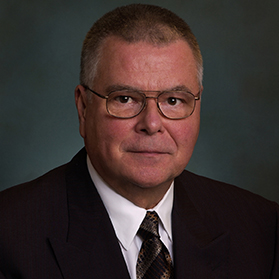- Home »
- Business Bankruptcy »
- The Chief Restructuring Officer: Architect, Leader, & Change Agent

The Chief Restructuring Officer: Architect, Leader, & Change Agent
Navigating an Extreme Environment as Chief Restructuring Officer
The position of Chief Restructuring Officer (CRO) is not well defined or understood. This role does not have as much history as the more traditional positions such as CFO, CEO, or President. In turn, this leaves room for much misunderstanding.
The position of CRO may be thought of as one that works through bankruptcy, rationalizes a workforce, repositions marketing, or deals with re-financing or disposition of assets. It may indeed include all of these and much more. It may be used to lead an organization through mildly difficult situations, requiring some simple changes, or shepherd truly distressed ones through much more drastic situations.
There also does not seem to be any common understanding of the environment in which the CRO operates. Unfortunately, I have found in my 30 years in the industry that corporate denial is indeed a creature of infinite resource. By the time signs of corporate decline are even evident, problems are usually pervasive in depth, breadth, and scope. The health of a company can be thought of as existing on a continuum, with good health on one end and severe distress on the other — ‘the red zone.’ I would posit that this is the true environment of the CRO.
What is the Red Zone?
Before we delve into the CRO’s position as architect, leader, and change agent, it is worthwhile spending a moment discussing just what the ‘red zone’ is.
Organizations in the red zone are likely experiencing operational losses. This will be reflected in most or all financial indicators. It will also be reflected in scarcity of nearly all other resources including liquidity, talent, data, and most importantly, time.
In this environment, custodial management cannot possibly cope. Running day-to-day operations is a challenge in itself; managing a crisis with existing staff is nearly impossible. Current management may also lack perspective, flexibility, and be reluctant to take bold action.
As both management, and management information systems, will have likely broken down, there will be a paucity of data and what data there is will likely be wrong in some respect. This symptom is one of the most common in the distressed organization, and it is present in most of them. The lack of data will be pervasive and exacerbated by the unwillingness of employees to come forward and be the harbinger of bad news.
Given the lack of performance by the organization, numerous threats from stakeholders will emerge.
The CRO Faces a Tough Environment
Given the critical condition of distressed organizations, the CRO faces an environment that can be threating, resource scarce, ambiguous, extreme, and urgent all at the same time. In this milieu, management resources will be lacking and workloads will have dramatically increased. Existing management will likely be worn and may also lack perspective.
Factors of Success
Management under such circumstances is somewhat different than custodial management and therefore requires different attitudes and skill sets. This is why, when facing such extreme conditions, the CRO must first ask themselves if the possibility of success really does exist.
Success is possible if the following three elements are in place:
Profitability
There are products or services sufficient or nearly sufficient to sustain profitability. A core product or service is the seed of renewal. It permits profits that will sustain recovery. The core product or service may not be obvious at first; it may be hidden in all of the noise surrounding the organization. Ideally, the core is profitable at the onset of the renewal process, but it is possible that it is not. In this case, the path to profit should be well understood.
Capital
Reorganization will require enormous resources to make the necessary changes to achieve profitability. Sustainable profitability may take time to achieve, so sufficient capital will be needed to ‘weather the storm.’
Management
Management competent in the turnaround milieu be critical as both an architect of change and a force for its execution.
The CRO as Architect
Given time constraints, the appointed CRO cannot afford to be too linear in action. There must be overlap in evaluating viability, forming a plan, and execution — or all efforts will fail.
The Importance of Evaluating Viability
Though many of the CRO’s key actions will occur in parallel, evaluating viability will generally be the very first step. As part of this exercise the CRO will examine cash needs and potential resources for cash, looking several months ahead. This must be done objectively with a clear eye concerning all aspects of revenues and expenses, and a healthy skepticism concerning all data, because the data reported is often incorrect. Their preparation requires a view prejudiced to the negative, such as the eye of a pawnbroker or liquidator. This view should only be reversed by fact.
Once completed in this way, the short-term projections should be very accurate. It is better to have a shorter projection period and great accuracy. There is no reason for management to be surprised by a shortfall within the planning period as such a shortfall could be fatal.
This initial exercise will yield a whole host of benefits and generate valuable information concerning such things as gross margins, sales, key products, underlying asset value, and management performance.
The short-term projections will permit the fundamental viability assessment. If the projections are favorable they will also set the stage for the longer term and the basic plan for recovery.
The CRO as Leader and Change Agent
The CRO’s environment is exigent and ambiguous. The CRO faces multiple and interconnected threats from numerous stakeholders, where crucial decisions must be made with flawed information. In this environment, time is of the essence, and as each moment passes, the situation will grow worse.
For any company seeking recovery from distress, leadership is sine qua non.
A leader is differentiated from a manager, and the competent Chief Restructuring Officer is differentiated as the architect of recovery and the implacable force necessary to implement change.
We think you’ll also like:
- The Independent Director’s Role in Optimizing Corporate Workouts and Bankruptcy Outcomes
- Opening the Kimono: Operational and Financial Reporting Obligations at the Outset of a Chapter 11 Case
- 90 Second Lesson: Is a Business Turnaround Still Possible?
[Editors’ Note: To learn more about this and related topics, you may want to attend the following on-demand webinars (which you can view at your leisure, and each includes a comprehensive customer PowerPoint about the topic):
- Restructuring, Insolvency & Troubled Companies Series
- Bankruptcy Transactions 301 – Advice For The Advanced Practitioner Series
- Business Borrowing Basics Series
This is an updated version of an article originally published on February 13, 2020.]
©2024. DailyDACTM, LLC. This article is subject to the disclaimers found here.
About Tommy M. Onich, BBA CTP
Tom is a specialist in interim and crisis management with 20 years of senior management experience in financial, operational and statutory restructuring. He has served as Chief Restructuring Officer, Chief Executive Officer, and Chief Financial Officer in a wide range of business sectors including health care, structural steel, garment manufacturing, yacht building, die cast, railroad…

Related Articles
Kuney’s Corner – Cram Down: When the Creditor Says “No”
Opening the Kimono: Operational and Financial Reporting Obligations at the Outset of a Chapter 11 Case
90 Second Lesson: When a Seller of Real Property Files for Bankruptcy Before Closing
Subchapter V of Chapter 11: A User’s Guide
Personal Property Appraisals 101
Investing in Bankruptcy Claims as a Cash Investment
Session expired
Please log in again. The login page will open in a new tab. After logging in you can close it and return to this page.
